Welcome to the Pepsi marketing strategy and case study to find out How Pepsi market and promotes its products in the market. So, let’s get started.
Table of Contents
About Pepsi
The Pepsi soft drink, or Pepsi-Cola, was created in 1893 by pharmacist Caleb D. Bradham, 8 years after the creation of Coca-Cola. Originally the drink was sold as a medicine to relieve intestinal disorders but for its thirst-quenching properties, it was also consumed as a drink.
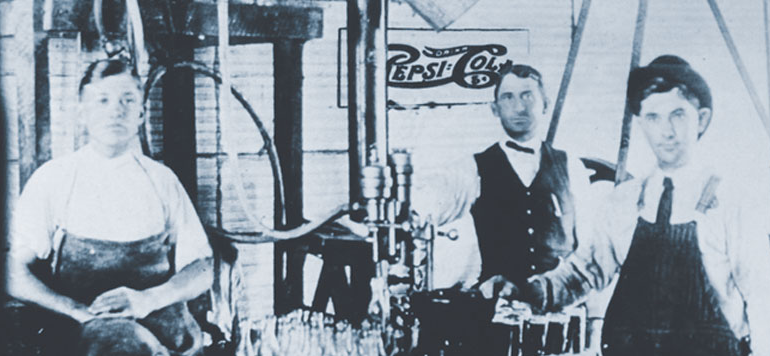
The Pepsi-Cola brand was registered by its creator in 1902 and its production intensified, so much so that Bradham was forced to relocate its production to a warehouse. However, the success was short-lived as World War I saw the price of sugar rise dramatically, so much so that the company went bankrupt. The brand was bought by Roy Megargel in the late 1920s and then, after a second bankruptcy, by Charles Guth who created The Pepsi-Cola Company. From 1964 the Pepsi range began to diversify, in particular with the sale of the first “light” cola, the Pepsi Diet.
Today there are a multitude of Pepsi varieties, some of which are only sold overseas, such as Pepsi Red, a red Pepsi sold in Japan. To beat its main competitor, Pepsi launched its first “Pepsi challenge” in 1975. After a blind tasting of Pepsi and Coca-Cola, 58% of the testers said they preferred the taste of Pepsi.
However, this study sparked controversy because the brand was accused of distorting the tasting by offering Coca-Cola that had been open for several days and lukewarm in front of Pepsi fresh from the refrigerator. Currently, the PepsiCo group markets several beverage brands in addition to Pepsi-Cola, such as 7up or Lipton Ice Tea. But the group is also present in the snacking market with brands such as Lays and Benenuts.
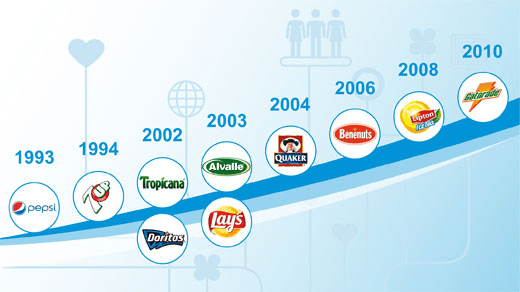
In 2012, PepsiCo was the second largest agribusiness company in the world and the first in North America by revenue, which was $ 65.5 billion. Worldwide, the group, present in 160 countries, employs more than 280,000 people.
Brand positioning
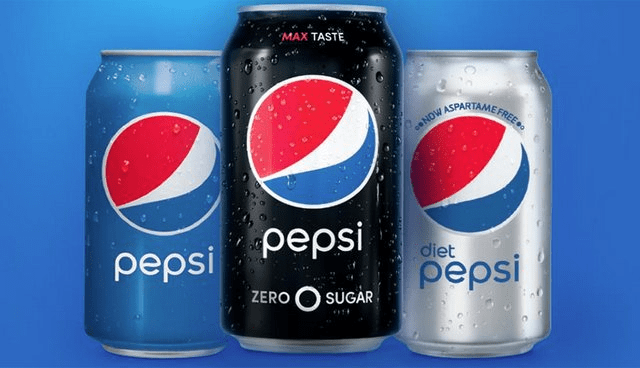
The main target audience of the Pepsi brand is clearly young people between the ages of 15 and 35, although anyone who drinks Pepsi is likely to be. However, the brand is trying to adapt to more feminine targets as well, most notably with its sugar-free drinks, one of which, Pepsi Light, was dressed in pink in 2007.
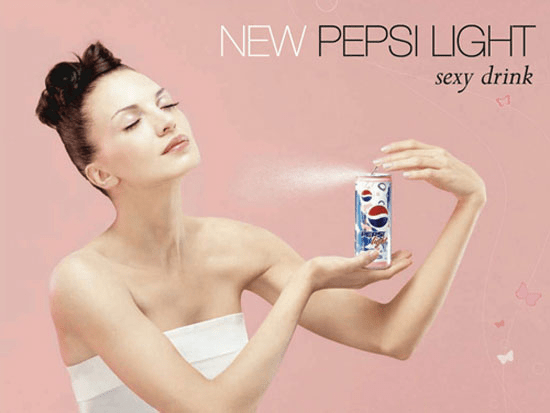
To be as close as possible to the personality of its consumers, Pepsi has managed to adopt a young, fun, and dynamic image. You can hear it in his commercials, where celebrities are particularly popular with young people, but also in his various slogans: “It’s the Pepsi generation!”, “Now… who thinks young, think Pepsi!”.
market concept
Pepsi focuses mainly on the young audience. To distinguish itself from its eternal rival Coca-Cola, which caters to all members of the family. This is why Pepsi wants to be available, and omnipresent in places mainly frequented by young people (universities, fast food restaurants, etc.). And who says youth, says limited portfolio, which leads Pepsi to position itself as an affordable and accessible product. To get closer to its target, the soft drink appeals to pop stars and wants to be provocative by daring to use comparative advertising with its rival Coca-Cola. All in a humorous way. An approach that cannot fail to enchant its main objective. One password: be “fun”.
Pepsi and advertising
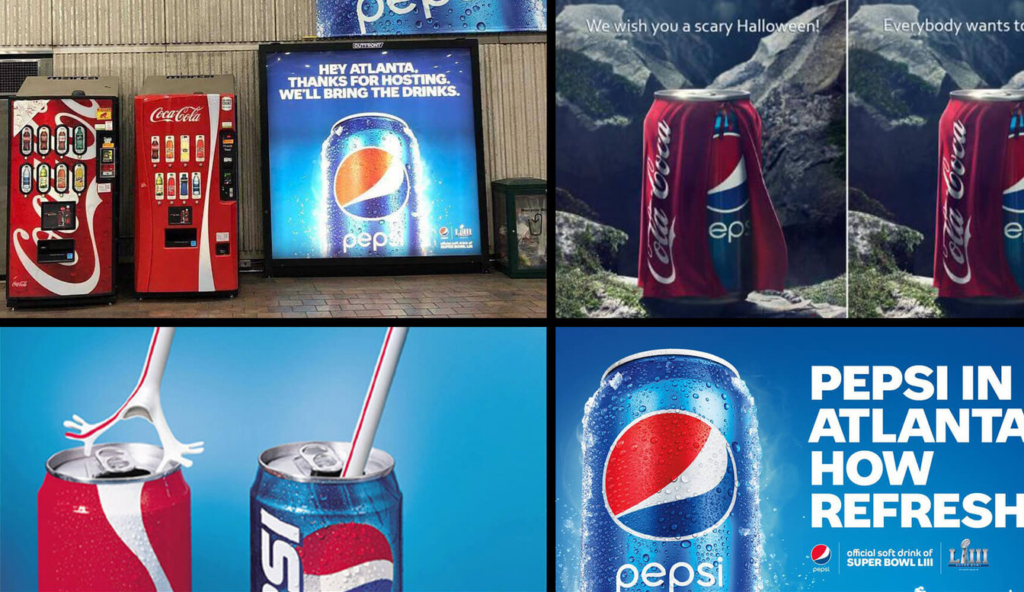
When it comes to its advertising strategy, Pepsi has always been way ahead. The brand was notably the first to invade the airwaves to broadcast an advertising message, as early as 1940. The brand also realized very quickly that to best reach a young audience, it had a keen interest in developing partnerships with celebrities in fashion. . Thus, in 1984 Pepsi signed its first partnership with Michael Jackson, who offered a cover of Billie Jean for the occasion.
More recently, in 2012, we saw Pepsi cans in the image of the King of Pop on our shelves to celebrate the 25th anniversary of his “Bad” album.
Another example of Pepsi’s advertising talent is the ambush marketing campaign organized during the 2006 FIFA World Cup in which the brand launched an “unofficial partner” campaign involving a dream ball team. round (Thierry Henry, David Beckham,…) against a Bavarian team.
Among the celebrities who have lent their image (and sometimes their voice) to the cola brand, we can mention Ray Charles, Britney Spears, the Spice Girls, and even Christina Aguilera. Pepsi has even made Hollywood movie-style commercials, like these two videos. The first, with the singers Pink, Beyoncé, and Britney Spears, recalls the film, Gladiator. As for the second, which reunites Beyoncé, Jennifer Lopez, and David Beckham, it is very reminiscent of Quentin Tarantino’s Kill Bill.
competition
For more than 100 years it has been a real war between the two cola giants: Coca-Cola and Pepsi. In France, the PepsiCo group, with its 6% market share, lags behind Coca-Cola, which holds 60% of sales in the soft drink market, but still remains ahead of Cadbury Schweppes and its shares. market share of 5%.
Hope! You find this study useful. Don’t forget to share it with your friends. Thank You.
Marketing strategy of other brands
McDonald’s marketing strategy: A benchmark in the fast food industry
Nike Marketing Strategy: The Case Study (Just Do It)
Puma Marketing Strategy Between Competition & Sponsorship
Electronics Giant Apple (Think different) Marketing Strategy
Red Bull Marketing Strategy: The Case Study



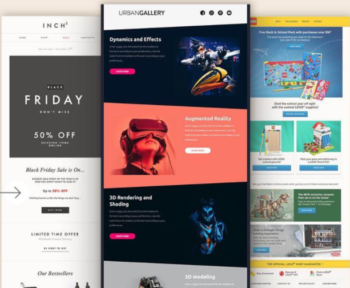


1 Comment